Hull Zero Three Read online
Page 16
But something’s missing.
Tsinoy lets out a whimpering groan, far beneath his dignity, and I slowly catch on, then share his concern. It’s all about what we don’t see. The grayish misty lines and the forward umbrella shield are no longer visible.
“The deflection cone,” Tsinoy says. “It’s gone.”
“Great,” Nell says.
“What’s that mean?” Kim asks.
“We’re moving very fast,” Tsinoy says, and shivers uncontrollably. Its teeth snap—it can hardly control its rage and disappointment. “The interstellar medium—grains of dust, gas… on the edge of the nebula…”
“We’re naked, right in the middle of a big storm,” Nell says. She moves over to the far edge of the viewports and tries to look down and back. She doesn’t have to look far. “The hulls are exposed, but that bump down there on the little moon, it’s still got something around it—the moon is protected, too. They’ve got a shield.”
“It’s Destination Guidance. They’re trying to scrape us off,” Kim says.
Nell has moved back to the board mounted farthest forward. It, too, has a small blue dome mounted in the center, and little else. She places her hands on the dome, and dim lights flicker around her face and arms. My twin and I join her, with Tomchin coming up right beside us, a new expression on his generally stoic face.
“What’s he know?” Kim asks from behind us. Nell breaks contact long enough to look, then urges us to put our hands on the dome, as before.
“All together,” she says.
We connect to the hull, becoming receptive points in a vast space full of information. The abstraction seems familiar, exactly what we expect—but there are far too many ugly patches of what looks like char, burned darkness, signifying blank spots in the hull’s memory. At a rough guess, it looks as if more than ninety percent of the space is damaged, inaccessible—or simply gone.
Tomchin is here with us. He’s controlling a part of the display, searching, leaving the rest of us to explore in our own regions of, what, expertise? Instinct? Programming?
“I hate this,” my twin says. I hear him through my ears but see flashes of his presence in the void—an angry, searching presence, matching my moves closely, but not exactly. “We need ten of us up here!”
“Only if the knowledge still exists to spread among you,” Tomchin says. It’s his voice, but in the space, we hear it in our language—and we understand it. His patch of awareness is off in a far corner of the area. He seems to be rummaging, searching for landmarks.
Then his presence rejoins us, and he’s hauling a tendril of connectivity, like a brilliantly jeweled cable—signifying a distant branch of hull memory. “It’s broken,” Tomchin says. “But this used to lead directly to the gene pool, to Life Design.”
Yes! Those words, those names…
“Can you follow it?” Nell asks him.
Without answering, he’s off again—physically still close, but his presence impossibly far away in an instant.
The Tracker is also with us now, apparently accessing through another board. “This hull still keeps a large share of Ship’s memory,” it says, and for the first time, I realize that Tsinoy is female—her presence is rich with identity. The Ship, the hull, knows her, trusts her, needs her. She’s an astrogation specialist. She may be the most important person among us—and because of her design, the one most likely to survive. Things begin to make a stark sort of sense. Maybe it’s the rest of us who are expendable.
Tsinoy pulls up a dense starfield, then demos how each star has a descriptor, rendered in a number of shifting symbol sets and languages. “The information has been updated continually,” she says.
“All Ship’s children got clues,” Nell says. “Let’s hope they’re enough to get us somewhere.”
The rumbling and grinding outside of our connected experience is low-key, not very distracting. We assume Kim will warn us if anything worse happens. In here, we’re exploring. Our need is painfully acute, more crucial than quenching thirst or assuaging hunger.
We might be about to find out why we are.
HULL MEMORY
Tsinoy is trying to figure out where we are headed. The first thing she discovers is that Ship is 439 light-years from Earth’s sun. There’s another measure of our distance traveled, more absolute—something to do with the crests of hyper-length cosmological gravitational waves, but it’s a bigger number, surrounded by dense mathematics, so we stick with light-years, because the memory of a year is so rich with other associations.
It seems we—my twin and I—know a great deal about our home planet, the Earth. Almost as if we had been born and raised there. Pleasant and distracting, but almost totally useless.
Tomchin returns, dragging another jeweled cable. His presence jacks the cable into ours, though Tsinoy waves him off, absorbed in her own work. (I have several definitions for the word jack, one of them involving a child’s game with little metal caltrops and a rubber ball—the other, an antiquated electrical or data connector. I assume the word refers to the connector. No reason to explore memories of playing the game as a child! Because I was never a child.)
The cable reveals to us a pull-down mare’s nest of more cables—lots more. Most appear charred and ugly. Some still glow while others have floating machine symbols like question marks. My twin and I reach through the tangle. We’re quickly becoming experts, our minds flooding with imprinted knowledge—but then, together, we clumsily grab the same cable.
Bad idea.
We’re home again.
We never left home.
It’s all been a hideous nightmare.
CORE MEMORY
Something in the hull recognizes us and tries to do us a favor by reconnecting us with what we are supposed to know and feel. There’s a little confusion because there’s two of us, but that’s okay—the system can be creative if it has to, and with a little modification, there we are, back on Earth, young twins with our whole lives ahead of us, training to embark on a journey to the newly outfitted Golden Voyager. That’s the name of this Ship, I think—we think.
We’re going to become part of the crew. The destination crew.
My twin and I don’t always get along, but we went through training together, and we rely on each other for solving major problems—including women. Though of late we have been suffering through competition over a particularly lovely lass named—
(And here it gets strange, because that brings up fragments of future memories, the broken bits of my history available to Hull Zero One when I was—)
Don’t be silly. That’s just part of the terrible dream. You aren’t made in deep space—you’re frozen with all of your shipmates, your future partners in the colonies, and the Golden Voyager—
Whatever. I can very clearly anticipate my partner in the staging area, boldly looking at me along the line of the first landing party, exchanging those excruciatingly meaningful glances of first adoration, then lifelong bonding. We are meant for each other—so why would my twin interfere?
But we have so much to catch up on. Mother and Father, sister, education up through secondary, physical adaptation and augmentation, getting our freezing-down organs installed after first qualification, long summer days at Camp Starfield, our first test freeze… We all come out healthy and whole, not even hungover, and now we’re ready for that installation flight out to the edges of the Oort cloud, to meet up with the chosen moonlet, on which is strapped the growing frame of our Ship. This is a journey of almost nine months, because it’s illegal to light off bosonic drives within the system.
So clear! I suppose that even in my confusion and my conflicting emotions, seeing our unborn Ship for the first time, far out in the darkness where only starlight matters, fastened like a tiny golden octopus to the long end of the moonlet—seeing all this is useful, helpful, but why does it have to come attached to so much imaginary bullshit? I’m just fine without a backstory. I know the real story.
They pump us ful
l of this continuity for psychological reasons—but why? They don’t trust us. We’re designed to be deceived.
We find spaces within the cramped living quarters, all three hundred of us, handpicked, tested, trained, passed—superior emotionally and physically to Earth’s best and brightest, filled with that glow of knowing where we’re going and what we’re going to do, flying in the most expensive goddamned object ever devised by the hands of humanity….
And as we go into the freezers to become time travelers into the future, to awaken five or six hundred years hence, we’re filled with an overwhelming joy at our destiny, more intense than anything we’ve experienced.
I’m still worried about my brother, of course, because we can’t both have her at the end of the journey. But we’ll work that out later.
Besides, I know, I anticipate…
At the end, there will be only one of us.
One of me.
My twin must be experiencing the same conflicts of indoctrination and emotion, because we pull up from this feed simultaneously, trying to shout in anger and frustration.
All wrong. All a lie.
“Hold on,” Tomchin says. “Wrong input. That’s the story if everything on Ship goes right. Here’s what we’re really looking for—the part of the Catalog that Ship uses if something goes wrong. And we all know that something has gone badly wrong.”
What pours into our presences next is even more disturbing than our false personal history. We’re paging through Ship’s instruction manual, examining every possible contingency.
The planet is already covered with primitive life-forms, and we can’t adapt, no matter how hard we try.
We’re out of fuel, we can’t move on…. Time to explore the far reaches of the Klados, the possibilities inherent in the nastiest neighborhoods of genetic phase space.
Time to bring out the Trackers and the Wastelayers. Time to convert the factors, the biomechanical servants that tended Ship while it grew from its egg into a mighty three-hulled starship, for the first twenty years of our journey, and that lit off the bosonic drives far from Earth’s star….
Time to turn the page to a nightmare of destruction. And along with this comes my—our—new, tougher personality and a new, harsher personal history. Earth was in desperate trouble when we left—it wasn’t the social and technological paradise depicted in our previous biography. No, it was a wreck. People were dying everywhere and pumped all their resources into creating this lifeboat to the stars. We’re humankind’s last hope, and now all that stands in our way is a planet covered with indigenous slime, hardly worthy of the name of intelligent life.
All we have to do is send down our Killers and Wastelayers and muck out that slime, then deactivate our weapons… and send down, in their place…
But that’s another cluster of points in the Klados, another page in the Catalog, not as grim and more than a little hazy. What is becoming clear is that the Catalog has been damaged along with everything else in hull memory. We have no idea what the Klados is capable of delivering.
Still, the pages turn. Something wants to unburden its psyche. Something needs to confess.
We’ve encountered a primitive technological civilization, capable of rudimentary exploration of their stellar system—that is, our target system. We’re here, we’re out of fuel, nowhere else to go—and they attack. They’re advanced enough that their weapons can do real damage, blow us to bits, in fact, and they won’t listen.
They refuse to share.
We can’t bargain with them. It’s going to be a long, drawn-out fight, ending in our extinction, unless we—
Turn the page. Another page. We’ve plowed our way to the margin of the deepest, darkest corner of genetic phase space, and beyond, it seems, lies a genius-level zoo of madness and destruction.
Death’s secret menagerie.
ACCESS GIVEN TO TOTAL WARRIORS ONLY.
Unexpectedly, we’re dumped back into the main gallery. Sweetness, light, deception. We don’t have the proper training, the proper indoctrination. None of us qualifies to venture into that section of the Catalog.
Rejected.
Tomchin bravely tries to hook us up to other cables, but we’re balky, burned down to nubbins—too much shock, too much contradiction, almost worse than the first time we were squeezed from our birth sacs.
When we let go of the blue hemisphere, we bumble and thrash and cry. It must look as bad to the others as it feels to us. Nell orders Kim to pull us aside. Kim moves in and holds us in his arms while we shiver and curse out our misery.
That takes a few minutes. Tomchin seems relatively unaffected, but now that we’re out, we don’t understand what he says, and without the girls, neither does anyone else.
The control chamber gets quiet.
Nell has a report to make. She looks around. All of the adults are listening, possibly even Tsinoy, still deep in her interstellar survey.
“Ever since we were born, things have been trying to kill us,” Nell says. “Dropping the shield seems to be a last-ditch attempt to get rid of us. We should assume that someone is willing to sabotage Ship operations and even destroy the hulls. Well, we may be able to fight back. I think there’s a way to initiate hull combination—to unite the Triad. Because Destination Guidance is supposed to be gone before the Triad is united, bringing the hulls together will squash and absorb that little ball down there—and reclaim the moonlet. It may give us back complete control. I just activate this system—”
The Tracker moves too fast for us to see and is suddenly right next to us, her paw on Nell’s hands, pushing them away from the hemisphere. “We can’t do that!” Tsinoy roars—a terrifying sound completely impossible to ignore.
Nell backs down from her control board. “Why not?” she asks, teeth gritted.
“Because I can’t find most of the navigational data or any way to control Ship’s engines,” Tsinoy says. “I think we’ve been sidetracked into bad space—a really dangerous region—and as far as I can tell, we’re less than halfway to where we want to be. We can’t destroy Destination Guidance. Whoever they are, we need their help.”
“But they want us dead,” Nell says.
None of us, it seems, has noticed that the girls have returned—and are listening to us all with worried faces.
“How do we know that?” Tsinoy asks.
“Ship Control,” I say.
“How reliable is that?” Tsinoy asks, her spikes at full defensive posture, an awesome display that expands her to three times her former dimensions.
We all back away.
The girl nearest me pushes out her lower lip. “We tell you. Mother tells us.”
“Oh, it’s that, is it?” Tsinoy says. “We’ve never met Mother. We have no way to question her. We can’t make this decision without more evidence, because if we do, there’s a very real chance we’ll never find our way to a good star. Ship will die out here.”
“We’re dying now,” my twin says. “Can’t you hear it? We’re being sandblasted to oblivion. You said so yourself.”
Nell listens to all this with a frightened grimace. She’s trying to form the right words to bring us back on some sort of constructive track. But the problem is being stated very clearly by our formidable astrogation expert.
Tsinoy pulls in her spines. “There’s a maneuver that might explain turning off the shield, temporarily,” she says. “It’s part of Ship’s standard procedure. But it doesn’t make sense—not now, not yet.”
BAD NEWS, WORSE
If you’re like me, you’ve been trying to form a picture of Destination Guidance. Chances are you’ve been at least as successful. We’re not supposed to know about them. Our brains refuse to seriously consider their little spherical refuge down there on the leading point of the moonlet—and we have no idea what they look like or what they want. If they were ever a planned part of this mission—and that makes sense, at least as far as our ignorance allows us to judge—then they’ve failed. From what we’ve been
able to piece together, they’ve stayed past their time, and they are very likely responsible for most, if not all, of our problems.
But to fight something, you really have to try to understand its motivations—particularly when the something you’re fighting holds most of the cards, the deck is stacked against you, and the whole gambling hall is on fire and filled with thugs.
The shivering and grinding gets louder. Unbearably loud. We shouldn’t be here when this happens.
“Our brains are packed with crap,” my twin shouts to me as we move aside. Then we put our heads together. We’re both thinking as fast as we can to arrange what few facts we have into some usable order. “Fake history, fake lives—storybook crap. How can we replace all that crap with useful information? We have to force our way into data that doesn’t want to be known.”
“We just tried,” I say, working to keep my voice low but still be heard over the cacophony. “Why does Ship even tempt us?”
“We should be getting the hell out of here!” Kim cries out, covering his ears. The big fellow is on the edge of panic, and if he loses it, where does that leave us?
“Because there’s a contradiction in Ship’s systems, all of them,” my twin says. “Right?”
That much is obvious.
“So talk to me,” he says, staring into my eyes. “Double-team with me. Tell me what I should be thinking.”
I go back through a quick selection of my inner mumblings and fragmented theories. We’re both so far into this little game that we don’t see until we’re almost finished that everyone else is watching us, quiet, waiting.
All but Nell. She has once more applied herself to the blue hemisphere controls, her eyes turned up in her head. We silently wish her luck.
“We’ve got false memories,” I say, “so that when we arrive at a destination, we’re fully rounded individuals. We might be teachers, of a sort—but we need to have something to teach. Cultural history, rules and regulations, courtesy, patterns of behavior… How to get things done as a group.”

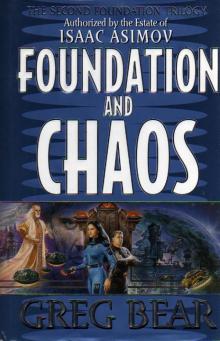 Foundation and Chaos
Foundation and Chaos Halo: Silentium
Halo: Silentium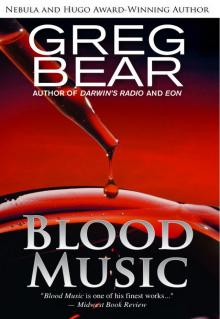 Blood Music
Blood Music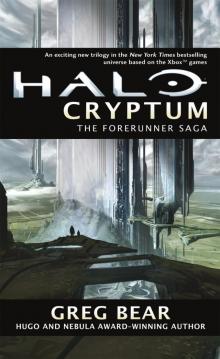 Halo: Cryptum
Halo: Cryptum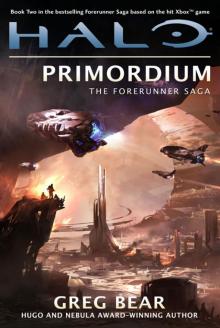 Halo: Primordium
Halo: Primordium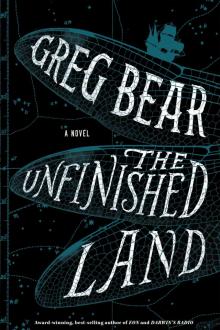 The Unfinished Land
The Unfinished Land Hardfought
Hardfought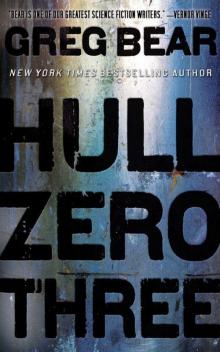 Hull Zero Three
Hull Zero Three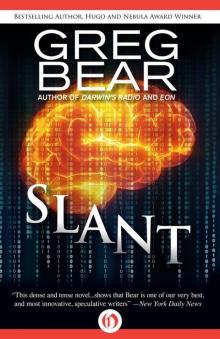 Slant
Slant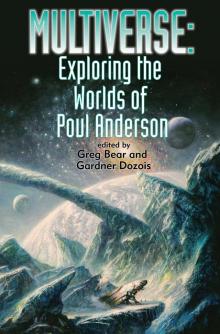 Multiverse: Exploring the Worlds of Poul Anderson
Multiverse: Exploring the Worlds of Poul Anderson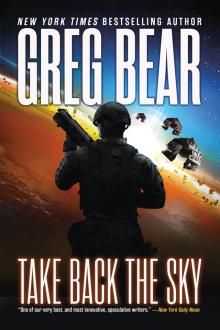 Take Back the Sky
Take Back the Sky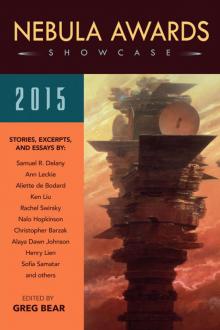 Nebula Awards Showcase 2015
Nebula Awards Showcase 2015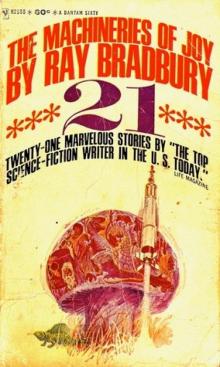 Machineries Of Joy
Machineries Of Joy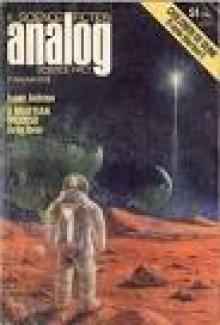 A Martian Ricorso
A Martian Ricorso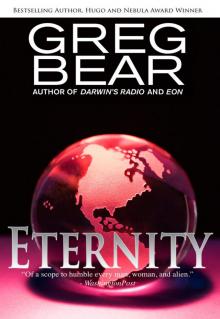 Eternity
Eternity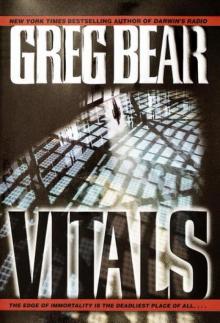 Vitals
Vitals The Infinity Concerto
The Infinity Concerto Beyond the Farthest Suns
Beyond the Farthest Suns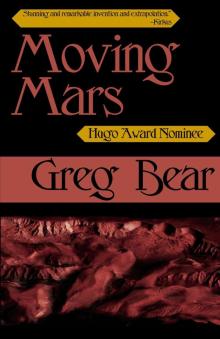 Moving Mars
Moving Mars Quantico
Quantico Darwin's Radio
Darwin's Radio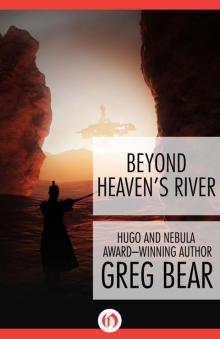 Beyond Heaven's River
Beyond Heaven's River Star Wars - Rogue Planet
Star Wars - Rogue Planet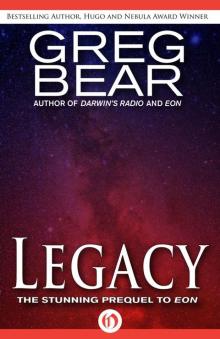 Legacy (Eon, 1)
Legacy (Eon, 1)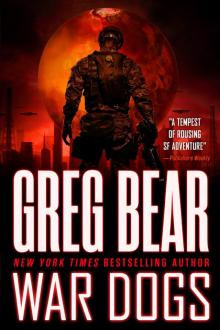 War Dogs: Ares Rising
War Dogs: Ares Rising Sisters
Sisters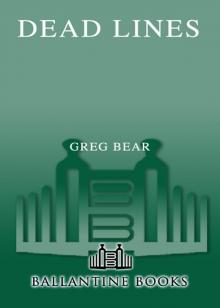 Dead Lines
Dead Lines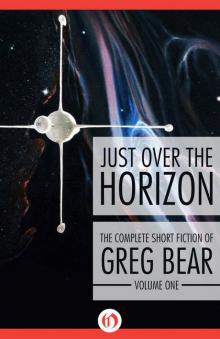 Just Over the Horizon (The Complete Short Fiction of Greg Bear Book 1)
Just Over the Horizon (The Complete Short Fiction of Greg Bear Book 1) Eon (Eon, 2)
Eon (Eon, 2) Venging
Venging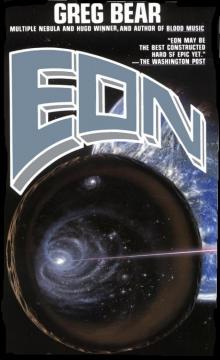 Eon
Eon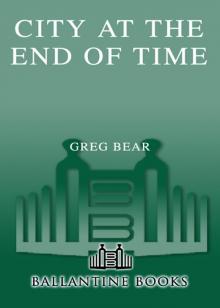 City at the End of Time
City at the End of Time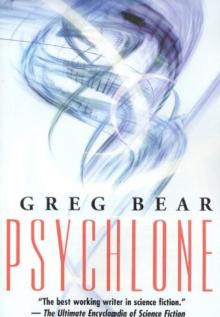 Psychlone
Psychlone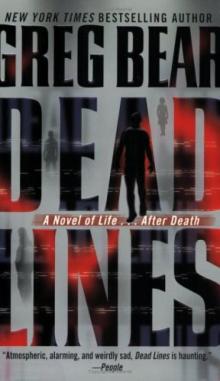 Dead Lines, A Novel of Life... After Death
Dead Lines, A Novel of Life... After Death Eternity (Eon, 3)
Eternity (Eon, 3) Cryptum
Cryptum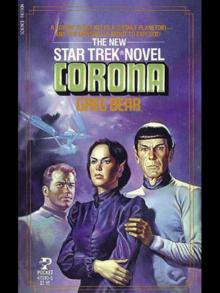 Corona
Corona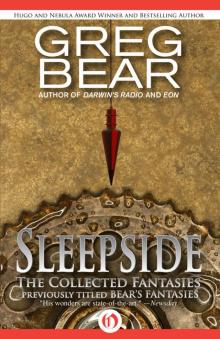 Sleepside: The Collected Fantasies
Sleepside: The Collected Fantasies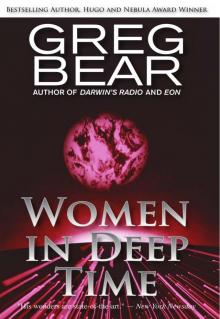 Women in Deep Time
Women in Deep Time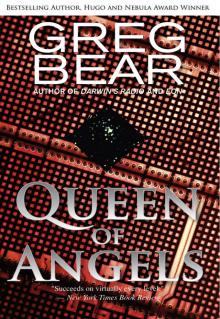 Queen of Angels
Queen of Angels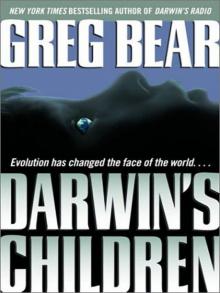 Darwin's Children
Darwin's Children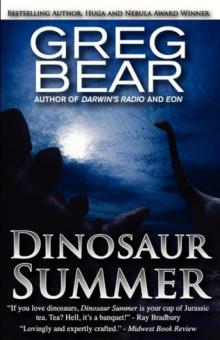 Dinosaur Summer
Dinosaur Summer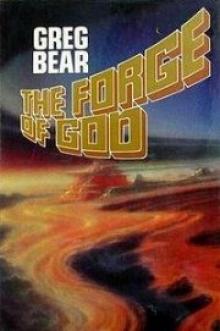 The Forge of God tfog-1
The Forge of God tfog-1 Foundation and Chaos f-9
Foundation and Chaos f-9 Star Wars: Rogue Planet
Star Wars: Rogue Planet The Forge of God
The Forge of God Mariposa
Mariposa Halo: Cryptum: Book One of the Forerunner Saga
Halo: Cryptum: Book One of the Forerunner Saga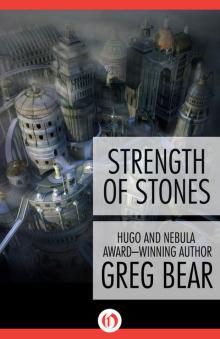 Strength of Stones
Strength of Stones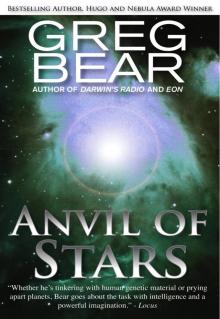 Anvil of Stars
Anvil of Stars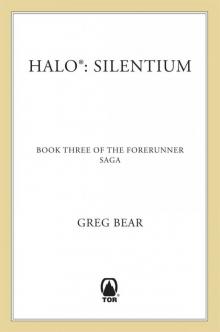 B00AQUQDQO EBOK
B00AQUQDQO EBOK Anvil of Stars tfog-2
Anvil of Stars tfog-2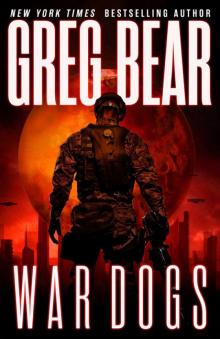 Ares Rising 1: War Dogs
Ares Rising 1: War Dogs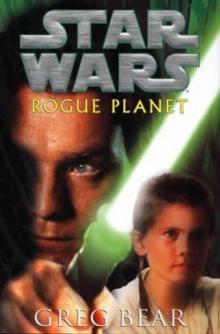 Rogue Planet (star wars)
Rogue Planet (star wars) The Machineries of Joy
The Machineries of Joy Far Thoughts and Pale Gods
Far Thoughts and Pale Gods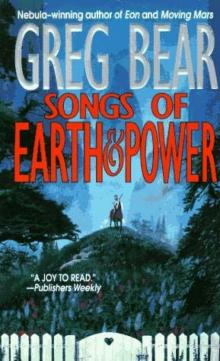 Songs of Earth and Power Omnibus
Songs of Earth and Power Omnibus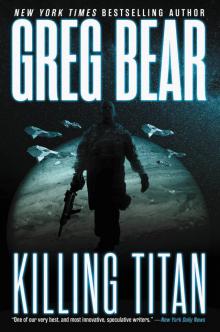 Killing Titan
Killing Titan Darwin's Radio d-1
Darwin's Radio d-1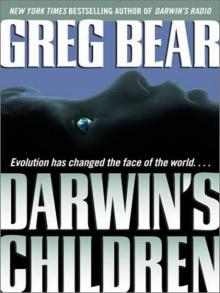 Darwin's Children d-2
Darwin's Children d-2